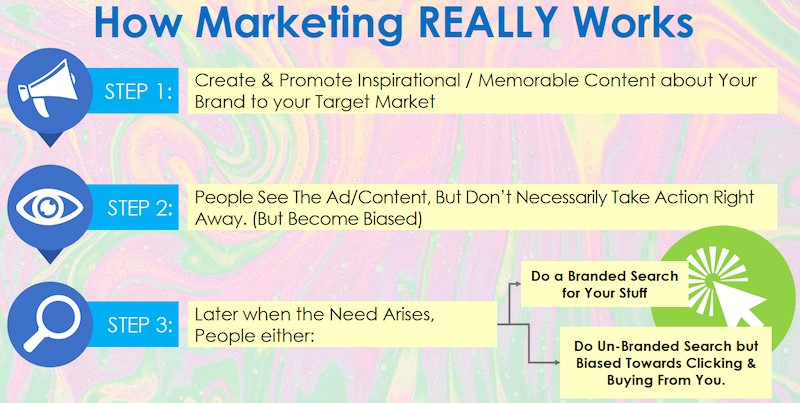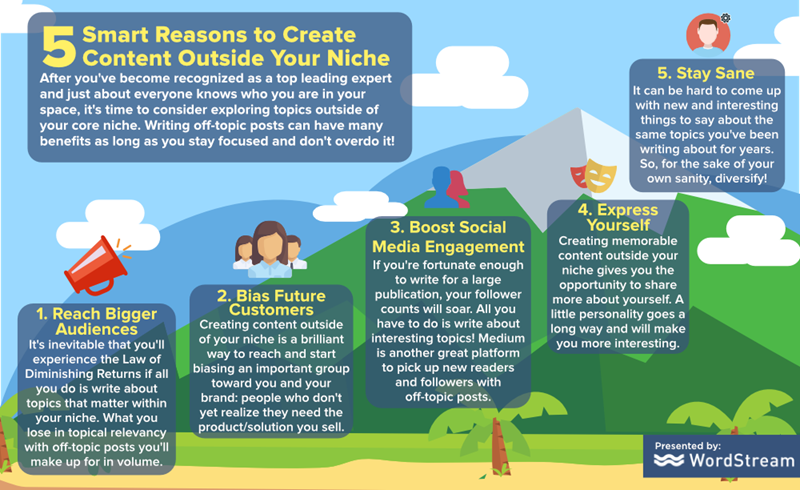Syndicated content sometimes gets a really bad rap in our industry.

Well, I’ve got a confession to make.

You should, too – and here’s why.
What Is Content Syndication?
First, a quick definition: Content syndication is a method of republishing content on other sites in order to reach a broader audience. Syndicated content not only increases your reach and brand awareness, it also builds links and can help drive more traffic to your original article.
What’s So Great About Content Syndication?
You need to syndicate your content. You’d be crazy not to.
Most of the biggest and most influential sites on the web feature syndicated content, including the New York Times, the Huffington Post, and CNN.
The web is so big and so noisy. It isn’t reasonable to think that all the people you want to reach will read your story just because you published it on your own blog.
Syndicating your content gets your blog posts (either the full article or a shortened version of it) in front of a different audience who otherwise would have never known it existed.
Content syndication is a very low-cost (usually no-cost) way to make your content go further. It’s much cheaper and quicker than writing a new blog post for a third-party site, either on the same topic or on something completely different.
You know where you’ll get with that strategy? Burned out.
Don’t Forget the Marketing in Content Marketing
Some experts may have warned you that syndicating content is a bad idea because you’ll end up getting dinged by a Google penalty.
This is nonsense.
Google won’t penalize you for syndicating content. At worst, any duplicate versions of your article might be filtered out of the search results.
Syndication isn’t about SEO. It’s a content marketing tactic – emphasis on the marketing. Because this is how marketing really works:
Here are the four types of content syndication bloggers need to know about.
1. Syndicate Third-Party Content on Your Blog
As a publisher, you can ask another website for permission to feature their content on your blog.
Ideally, your blog should contain about 10% syndicated content. Even though it may not be original, it’s always a great idea to feature helpful content that benefits your readers and is worth their time.
If you run a multiple author blog, you know how challenging it can be to get fantastic authors to commit to writing a post for you. Anyone who is truly a big deal influencer in your industry usually won’t have much free time to spend writing a unique blog post just for you.
Asking to feature an influencer’s existing content is a much more reasonable ask. They will probably feel honored to be asked by you.
For example, WordStream has featured syndicated content from some amazing experts in the past, like Jeff Weiner, CEO of LinkedIn; Blake Irving, CEO of GoDaddy; Dharmesh Shah, founder of HubSpot; and Jeff Haden of Inc.
Also, don’t forget to syndicate yourself!
If you contribute guest blog posts to third-party sites, republish those on your own blog. Many of the guest posts I’ve written have been republished on the WordStream blog, linking back to the original. Just remember to seek permission from the site you write for – some publishers ask for a period of exclusivity, usually a few weeks or longer.
Adding syndicated content instantly diversifies your content. It brings something new and valuable to your audience, even if it isn’t new to the web.
2. Syndicate Your Blog Content on Other Websites
As a publisher you can syndicate your content to be featured on other partner websites.
For example, several posts that were first published on the WordStream blog were later featured on top search industry sites like Small Business Trends and Social Media Today.
[Editor’s Note: Business 2 Community also has options for this kind of syndication via RSS feed]
These deals usually come in one of two flavors:
- All Syndicated Content: You create no original content for your partner. Your partner simply republishes your content.
- A Mix of Syndicated and Original Content: You agree to a split that’s acceptable to both sides. For instance, one month you give them syndicated content, the next it’s an original piece. Or if you agree to produce 1-4 posts per month, then at least one must be original.
Usually publishers are willing to make deals provided the quality is there. After all, they know you’re busy – and hey, it’s free content!
However, those publishers usually will only honor the deal as long as the content you’re giving them performs up to their expectations. It won’t be worth their time and effort if your syndicated content doesn’t generate any traffic or engagement.
3. Publishing Content on Sites That Syndicate Their Content
You can also get your content syndicated by becoming a regular contributor for a website that syndicates its content.
For example, I’m a columnist at Inc. magazine. So that means I’m publishing to a content syndicator.
Inc.’s content also ends up on major partner sites like Business Insider, Slate, and TIME.
4. Self-Service Syndication
You can also syndicate your own content.
Medium is a great place to do some self-service syndication. There are lots of great reasons why you should publish on Medium. Here are 10:
Also be sure to read my post on optimizing your Medium posts.
It’s also relatively easy to get an author ID and get published on the Huffington Post. They don’t really check your credentials. The conversations pretty much goes like this: “I want to write for you.” “OK, here’s your log-in.”
You can also post your articles on LinkedIn. Every time you do, everyone you’re connected to will receive a notification. Check out these 11 ways you can hack the LinkedIn Pulse algorithm.
Business 2 Community is another good place for self-service syndication. Stuff that gets published there can get syndicated on large sites like Yahoo.
[Editor’s Note: Business 2 Community partners with Google News, Yahoo News, Bing News, and Apple News, and works with NewsCred so that content published to our site might extend even further.]
Content Repurposing? There’s No Purpose!
Some publications don’t like syndicated content. They want to publish 100 percent original content.
But wait. They will publish your story. You just have to provide a completely different write up about the exact same topic.
Huh?
Content repurposing (a.k.a., content spinning)? Really?
I hate content repurposing (and I cannot lie). Can we just be adults here and think about this rationally?
What if the first blog post was brilliant – a total unicorn that got tons of traffic and engagement? If something performs magically well on one site, then the odds are that it will also perform well in syndication.
Or perhaps you want to promote a new infographic you created on some relevant publications. Does the world really need four completely unique write-ups to accompany that same infographic?
The only time you should repurpose or rewrite an article is if it’s for a different audience. For instance, maybe you need to “dumb it down” for a less tech-savvy audience.
Repurposing your posts into other posts is silly. Would you ask Jerry Seinfeld to re-edit all his old “Seinfeld” episodes (that are worth billions of dollars as they aired) to give them a more unique spin?
Go Big With Content Syndication
Content syndication in all its forms is incredibly valuable. It can be a win-win for any blogger.
Help your content go further with these four types of syndication:
- Publish syndicated content from other relevant publications on your blog.
- Syndicate your blog content to other relevant publications.
- Write original content for a relevant site in your space that syndicates its content to partners.
- Republish your blog content Medium and LinkedIn to help it reach a wider audience.




